Abstract
Mechanisms possibly involved in the regulation of the immune response were evaluated in 49 patients with American cutaneous leishmaniasis (ACL). The patients were classified on the basis of clinical and histopathological criteria as suffering localized (LCL), mucocutaneous (MCL) or diffuse (DCL) forms of the disease. A significant leishmanial antigen-induced suppression of in vitro mitogen responsiveness was demonstrated in the DCL group, but not in the other two diseases states. Lack of suppressive activity was particularly evident in MCL, this being the group that presented the highest in vivo and in vitro reactivity to the parasite antigens. In fact, a significant inverse correlation was found between the degree of suppression and the antigen-induced lymphocyte proliferative response. In contrast, a mixture of mononuclear cells from MCL patients and normal subjects showed higher that expected responses to mitogen, while this increase was not observed in co-cultures of DCL and normal mononuclear cells. Due to their possible modulatory influences, circulating immune complexes were also evaluated in these patient groups, higher levels being found in MCL and DCL patients than in either LCL or controls. The possible mechanisms involved in the regulation of the immune response to the protozoan in the complex disease spectrum of ACL are discussed in relation to anergy in DCL and hyperresponsiveness in MCL.
Full text
PDF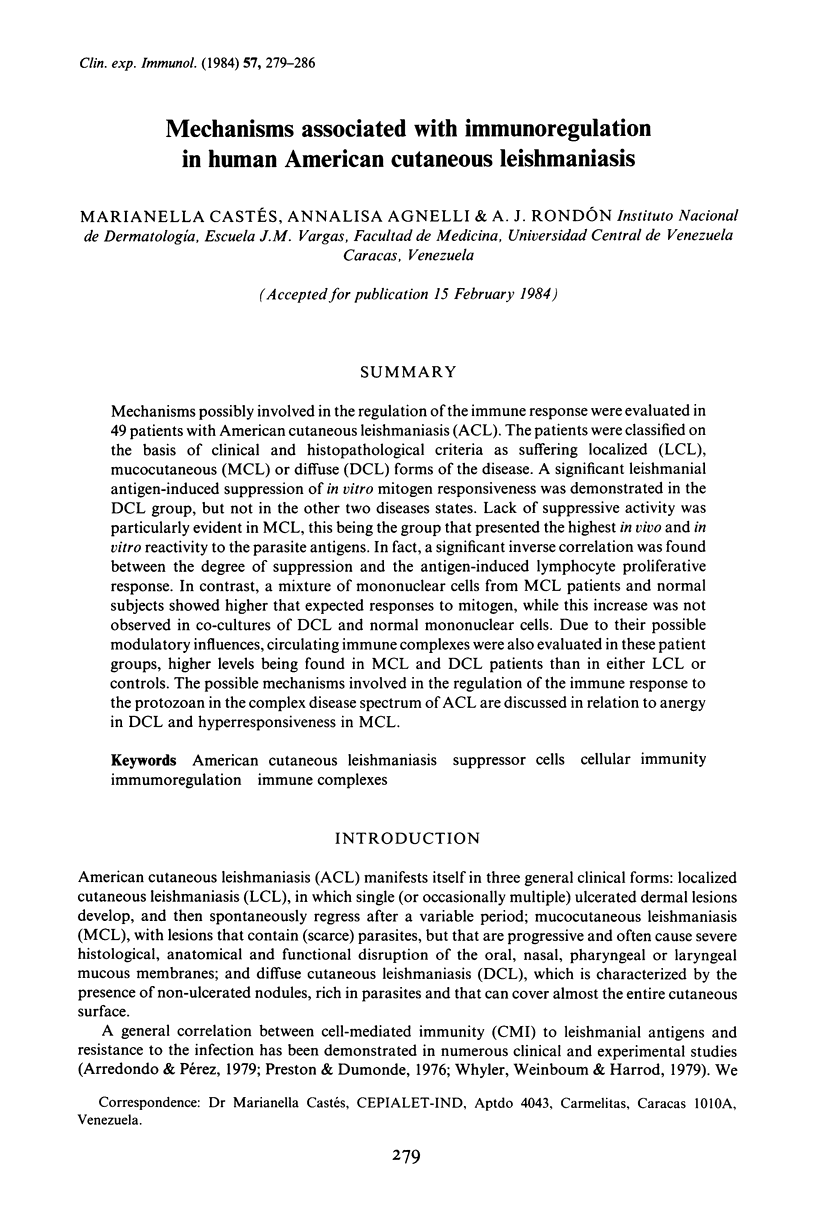
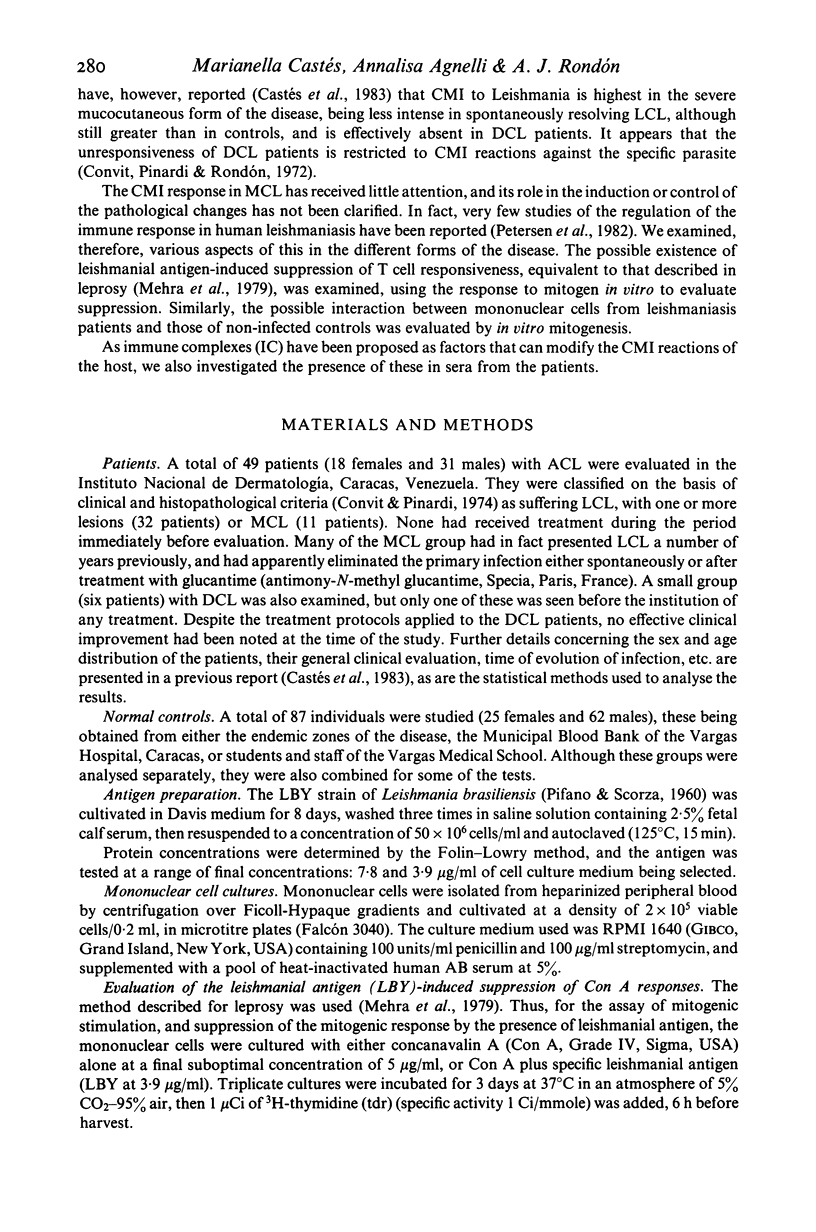
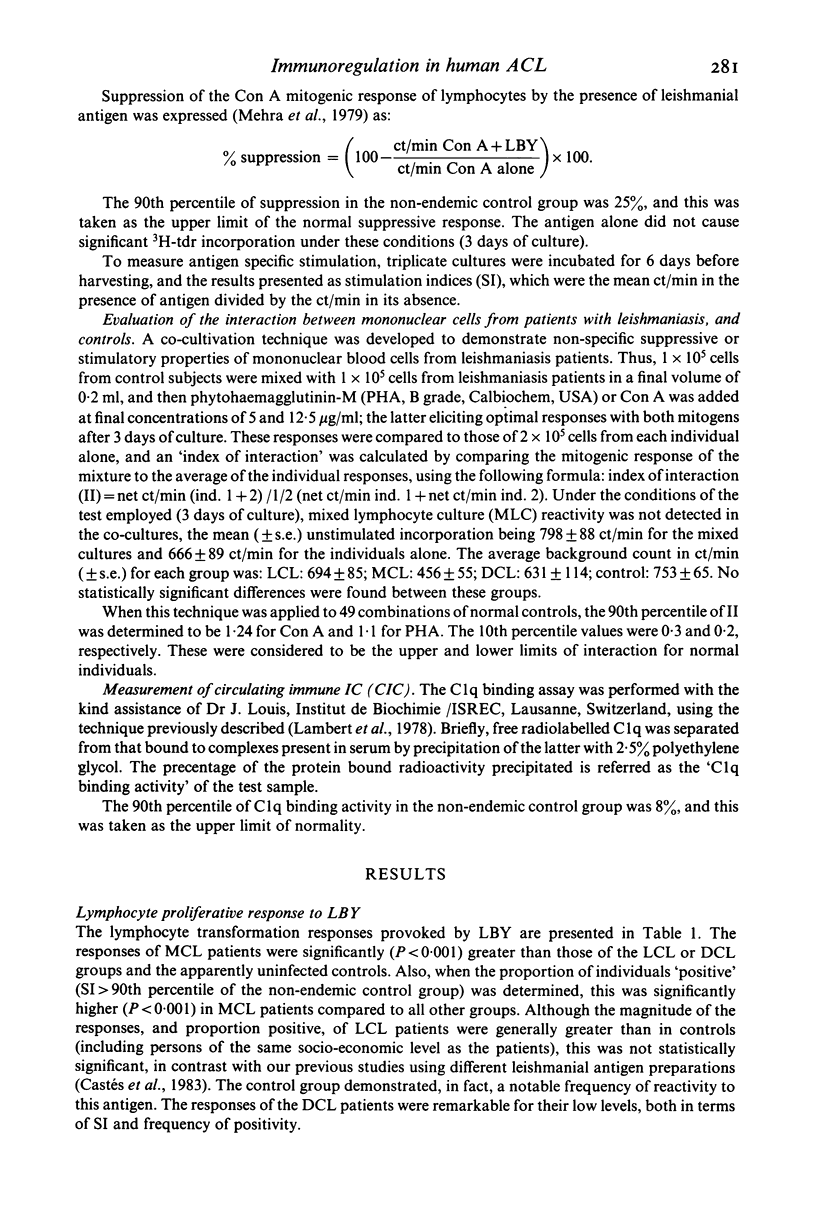
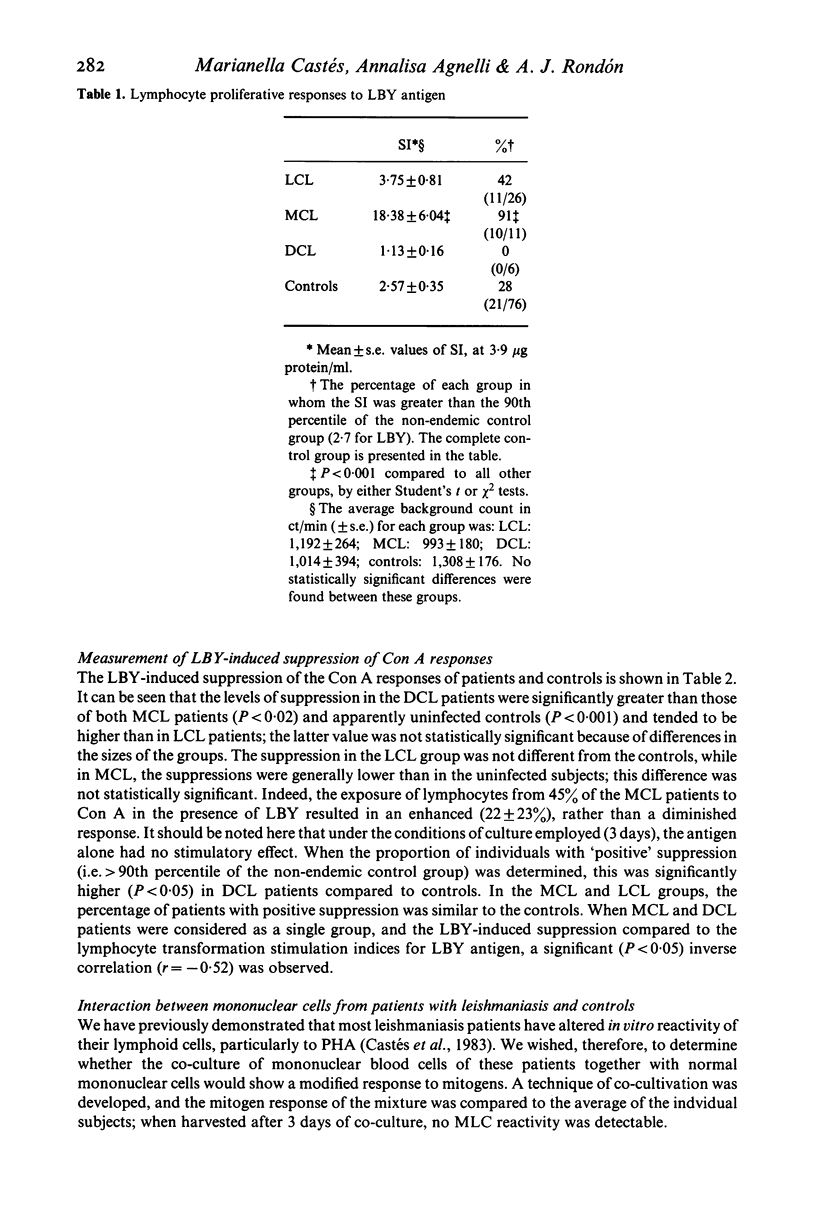
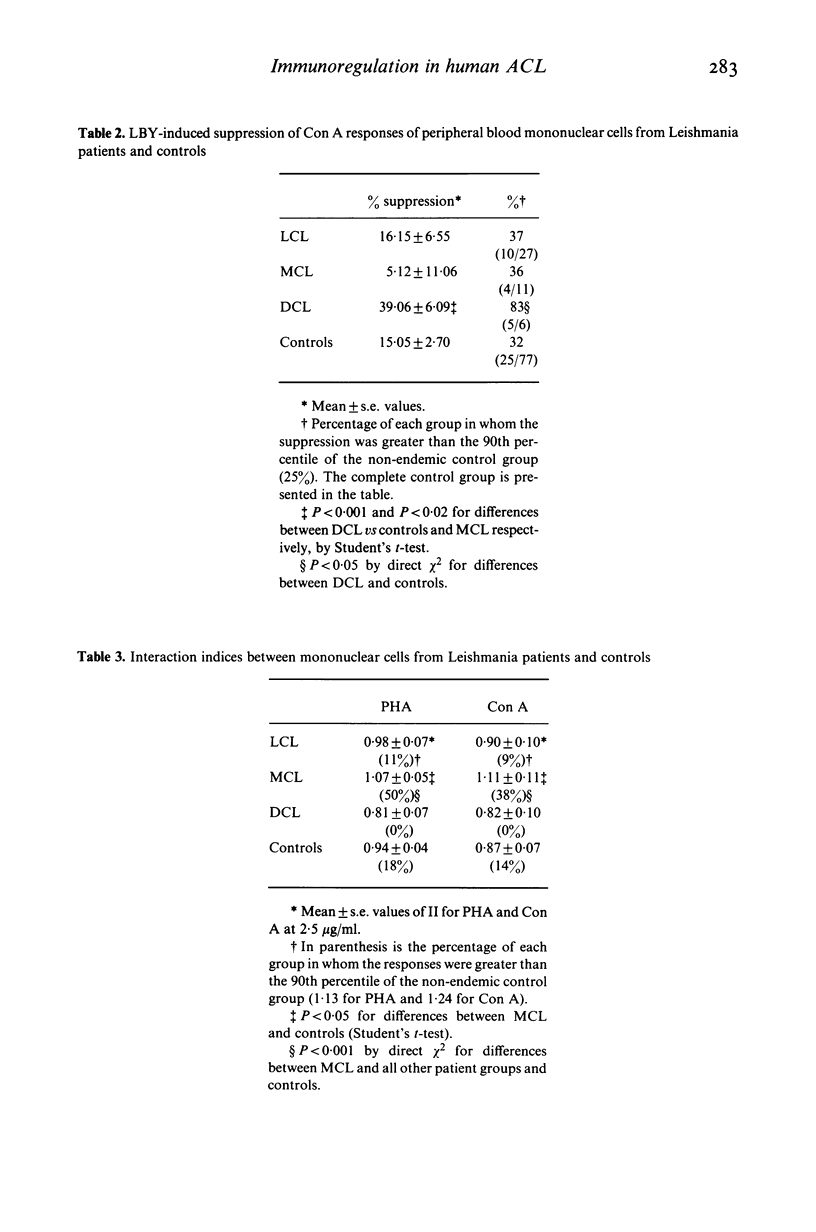
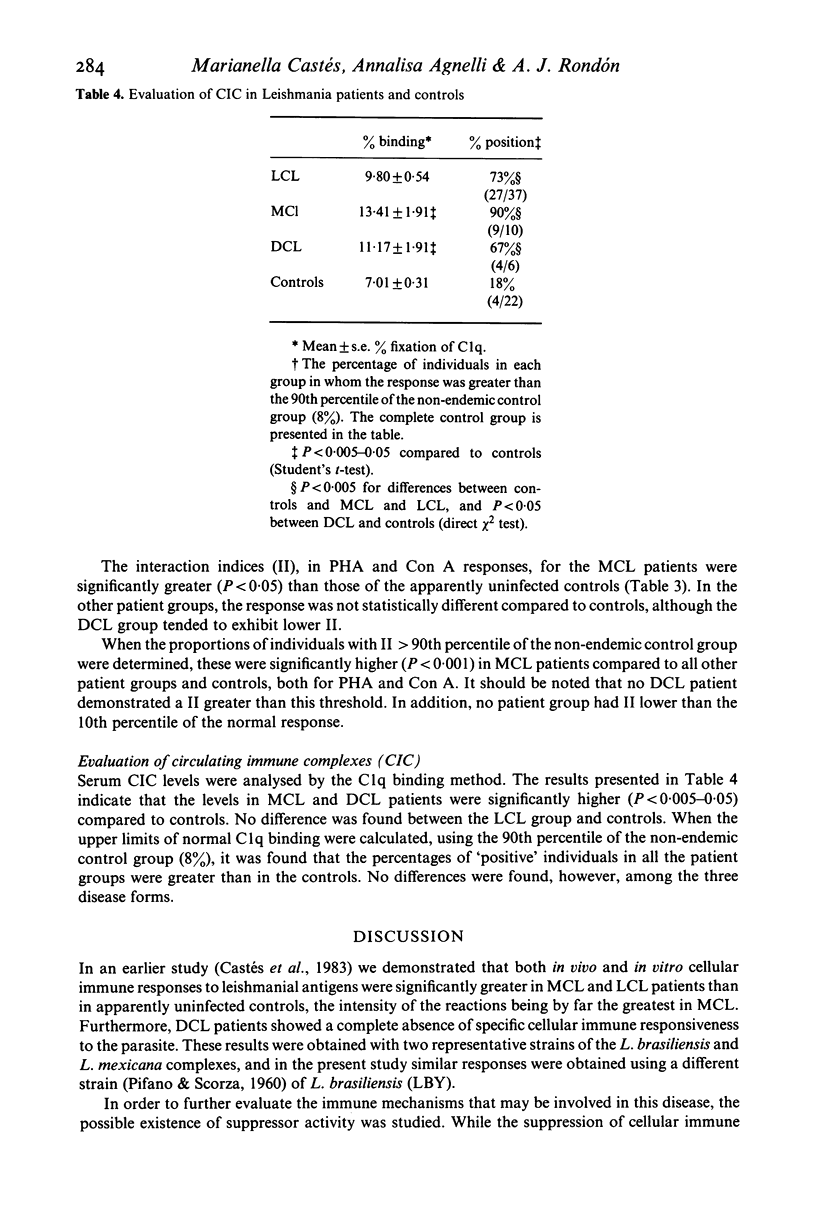
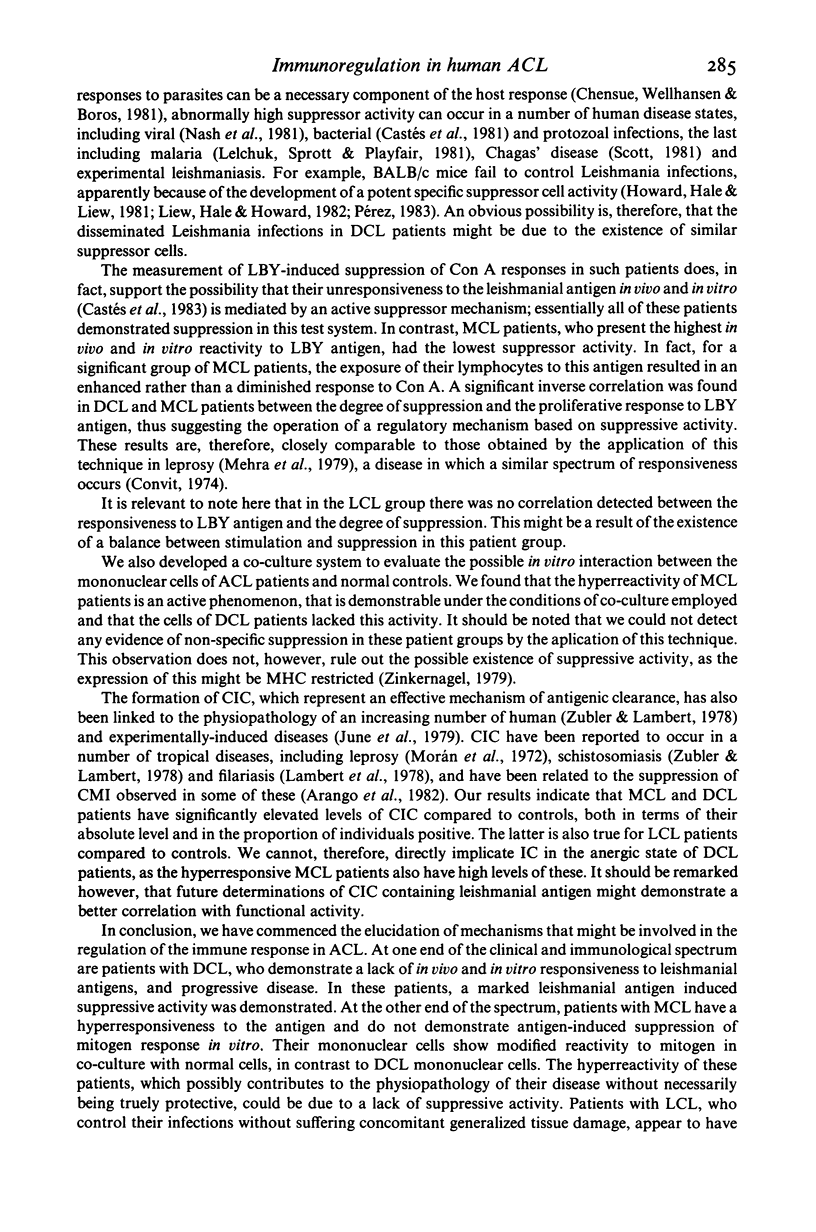
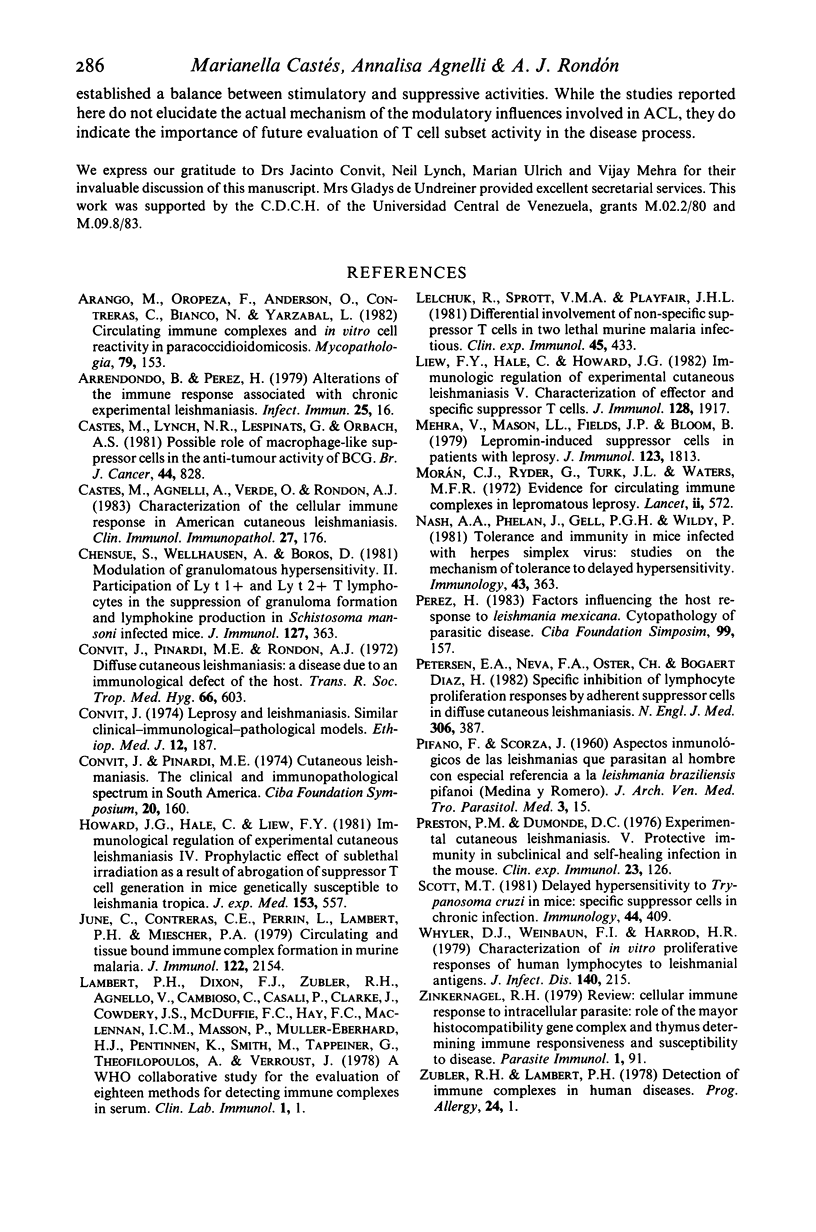
Selected References
These references are in PubMed. This may not be the complete list of references from this article.
- Arango M., Oropeza F., Anderson O., Contreras C., Bianco N., Yarzábal L. Circulating immune complexes and in vitro cell reactivity in paracoccidioidomycosis. Mycopathologia. 1982 Sep 17;79(3):153–158. doi: 10.1007/BF01837195. [DOI] [PubMed] [Google Scholar]
- Arredondo B., Pérez H. Alterations of the immune response associated with chronic experimental leishmaniasis. Infect Immun. 1979 Jul;25(1):16–22. doi: 10.1128/iai.25.1.16-22.1979. [DOI] [PMC free article] [PubMed] [Google Scholar]
- Castes M., Agnelli A., Verde O., Rondón A. J. Characterization of the cellular immune response in American cutaneous leishmaniasis. Clin Immunol Immunopathol. 1983 May;27(2):176–186. doi: 10.1016/0090-1229(83)90068-5. [DOI] [PubMed] [Google Scholar]
- Castés M., Lynch N. R., Lespinats G., Orbach-Arbouys S. Possible role of macrophage-like suppressor cells in the anti-tumour activity of BCG. Br J Cancer. 1981 Dec;44(6):828–837. doi: 10.1038/bjc.1981.281. [DOI] [PMC free article] [PubMed] [Google Scholar]
- Chensue S. W., Wellhausen S. R., Boros D. L. Modulation of granulomatous hypersensitivity. II. Participation of Ly 1+ and Ly 2+ T lymphocytes in the suppression of granuloma formation and lymphokine production in Schistosoma mansoni-infected mice. J Immunol. 1981 Jul;127(1):363–367. [PubMed] [Google Scholar]
- Convit J., Pinardi M. E., Rondón A. J. Diffuse cutaneous leishmaniasis: a disease due to an immunological defect of the host. Trans R Soc Trop Med Hyg. 1972;66(4):603–610. doi: 10.1016/0035-9203(72)90306-9. [DOI] [PubMed] [Google Scholar]
- Convit J. The Kellersberger Memorial Lecture: leprosy and leishmaniasis similar clinical-immunological-pathological models. Ethiop Med J. 1974 Oct;12(4):187–195. [PubMed] [Google Scholar]
- Howard J. G., Hale C., Liew F. Y. Immunological regulation of experimental cutaneous leishmaniasis. IV. Prophylactic effect of sublethal irradiation as a result of abrogation of suppressor T cell generation in mice genetically susceptible to Leishmania tropica. J Exp Med. 1981 Mar 1;153(3):557–568. doi: 10.1084/jem.153.3.557. [DOI] [PMC free article] [PubMed] [Google Scholar]
- June C. H., Contreras C. E., Perrin L. H., Lambert P. H., Miescher P. A. Circulating and tissue-bound immune complex formation in murine malaria. J Immunol. 1979 Jun;122(6):2154–2161. [PubMed] [Google Scholar]
- Lelchuk R., Sprott V. M., Playfair J. H. Differential involvement of non-specific suppressor T cells in two lethal murine malaria infections. Clin Exp Immunol. 1981 Aug;45(2):433–438. [PMC free article] [PubMed] [Google Scholar]
- Liew F. Y., Hale C., Howard J. G. Immunologic regulation of experimental cutaneous leishmaniasis. V. Characterization of effector and specific suppressor T cells. J Immunol. 1982 Apr;128(4):1917–1922. [PubMed] [Google Scholar]
- Mehra V., Mason L. H., Fields J. P., Bloom B. R. Lepromin-induced suppressor cells in patients with leprosy. J Immunol. 1979 Oct;123(4):1813–1817. [PubMed] [Google Scholar]
- Moran C. J., Ryder G., Turk J. L., Waters M. F. Evidence for circulating immune complexes in lepromatous leprosy. Lancet. 1972 Sep 16;2(7777):572–573. doi: 10.1016/s0140-6736(72)91962-9. [DOI] [PubMed] [Google Scholar]
- Nash A. A., Phelan J., Gell P. G., Wildy P. Tolerance and immunity in mice infected with herpes simplex virus: studies on the mechanism of tolerance to delayed-type hypersensitivity. Immunology. 1981 Jun;43(2):363–369. [PMC free article] [PubMed] [Google Scholar]
- PIFANO F., SCORZA J. V. [Immunological aspects of Leishmania that parasite man, with special reference to Leishmania brasiliensis pifanoi, Medina & Romero, 1957]. Arch Venez Med Trop Parasitol Med. 1960 Dec;3:15–30. [PubMed] [Google Scholar]
- Petersen E. A., Neva F. A., Oster C. N., Bogaert Diaz H. Specific inhibition of lymphocyte-proliferation responses by adherent suppressor cells in diffuse cutaneous leishmaniasis. N Engl J Med. 1982 Feb 18;306(7):387–392. doi: 10.1056/NEJM198202183060702. [DOI] [PubMed] [Google Scholar]
- Preston P. M., Dumonde D. C. Experimental cutaneous leishmaniasis. V. Protective immunity in subclinical and self-healing infection in the mouse. Clin Exp Immunol. 1976 Jan;23(1):126–138. [PMC free article] [PubMed] [Google Scholar]
- Pérez H. Factors influencing the host response to Leishmania mexicana. Ciba Found Symp. 1983;99:157–173. [PubMed] [Google Scholar]
- Scott M. T. Delayed hypersensitivity to Trypanosoma cruzi in mice: specific suppressor cells in chronic infection. Immunology. 1981 Oct;44(2):409–417. [PMC free article] [PubMed] [Google Scholar]
- Wyler D. J., Weinbaum F. I., Herrod H. R. Characterization of in vitro proliferative responses of human lymphocytes to leishmanial antigens. J Infect Dis. 1979 Aug;140(2):215–221. doi: 10.1093/infdis/140.2.215. [DOI] [PubMed] [Google Scholar]
- Zinkernagel R. M. Review: cellular immune responses to intracellular parasites: role of the major histocompatibility gene complex and thymus in determining immune responsiveness and susceptibility to disease. Parasite Immunol. 1979 Summer;1(2):91–109. doi: 10.1111/j.1365-3024.1979.tb00698.x. [DOI] [PubMed] [Google Scholar]
- Zubler R. H., Lambert P. H. Detection of immune complexes in human diseases. Prog Allergy. 1978;24:1–48. [PubMed] [Google Scholar]


